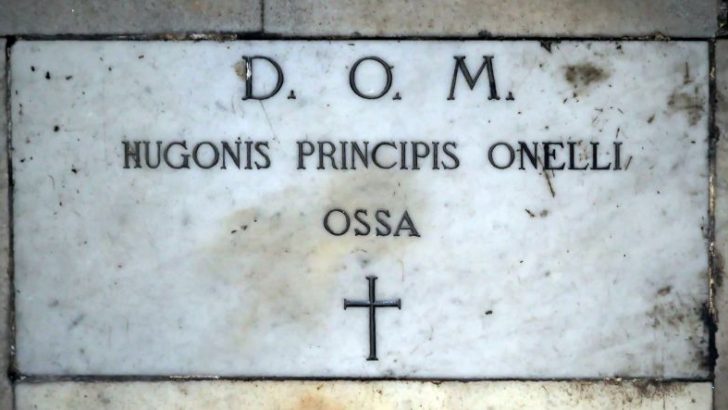Archives | State Papers
Secrets of the powers that be
One of the minor mysteries connected with the centuries-long Irish connection with Rome and the Vatican is the location of the grave of Hugh O’Neill, Earl of Tyrone, who died there in exile in 1616.
This must once have been well known, but by the middle of the 19th Century it was lost. In a letter to Archbishop Cullen on February 19, 1851 Monsignor Kirby of the Irish College reported on his recent search.
“…Some time since in repairing the pavement of S. Pietro in Montorio the two inscriptions of our Irish chieftains had to be taken up.
“When they were up, the friars ordered them to be sawed by their thickness into two so that two lapidi of equal length and breath as the original and half its thickness might be had from each. Whilst they were in the process of being sawn one of our camerata called there on their evening’s walk and saw the matter, complained of it, and on their return came to me about it.
“I went off to Cardinal Tosti, the Titular of San Pietro in Montoria, and explained to him the history of the two heroes, and that it might give rise to some unhandsome remarks in the papers were it known that such a thing was done in Rome.
“He entered at once and fully into the spirit of the remarks I made and told me to go at once in his name to the P. Gurdiano to have the sawing suspended, adding that he would at his own expense have them reclaimed and polished and put into their place.
“I went at once to the friars, and thus the whole thing was at once settled. The friars civilly excused themselves saying that the vault of the sepulchre under the lapidi had given way and that the fetta to be sawn off each was intended to cover expenses etc. I mention the matter in order that, if anything should appear in the Times or other journal giving an untrue version of the matter, Dr Cooper might at once get the matter righted.
“Perhaps it would be no harm in your letter if you could say to me to state that several Catholics felt obliged to C. Tosti for his gentilezza in the matter. “
Vague
If all was well (in a sort of vague way) in 1851, by 1986 it was not. In September Cardinal Ó Fiaich wrote personally to Peter Barry, the Minster of External Affairs. He outlined that his involvement with the Friends of the Irish College in Rome had led him to try to find the lost graves. He enclosed the extract quoted above.
“It shows how the other graves in S. Pietro were being ‘vandalised’ in an effort to repair the Church and it is possible that the stone marking the grave of Hugh O’Neill was similarly ‘vandalised’.”
Peter Barry contacted the Irish Ambassador in the Vatican about the matter. But the reply to this revealed a more complicated state of affairs. Efforts in the recent past had failed “because of the lack of cooperation from the Church administrations”.
The Spanish church of S. Pietro had had recently been given extra-territorial status and was to be administered directly by the Spanish Academy. It was suggested an approach to the Spanish embassy about checking the slabs as well to the Father General of the Franciscans as the friars of S. Pietro had not been helpful in the past about the matter.
But the ownership became a matter of a legal action by the friars who claimed it had been illegally ceded to Spain by the Italian authorities. Irish experts, after going into the evidence, were now doubtful of a happy conclusion regarding the slabs and the location as the evidence such as it was seemed to them less reliable than had been thought.
The original simple tombstone was lost about 1849, but the text of the short inscription was copied: “D.O.M. Hugonis principis ONelli ossa” (Dedicated to God the Best and Greatest. The bones of Prince Hugh O’Neill).
In 1989, Cardinal Ó Fiaich laid a new marble plaque with the same inscription in approximately the original place.
More recent explorations of the vault failed to solve the mystery. But there is little chance that the bodies of the Irish leaders can be recovered from the litter in the detritus the vault, according to Elizabeth FitzPatrick, an archaeologist at NUI, Galway.
They may still exist, but only further work will tell.


 Peter Costello
Peter Costello The new stone laid on Hugh O'Neill's grave
The new stone laid on Hugh O'Neill's grave 